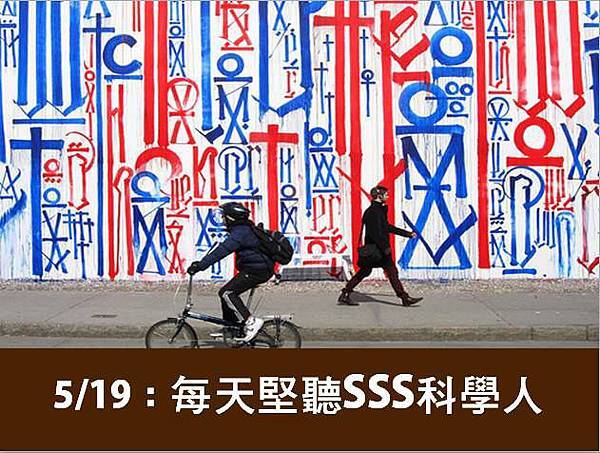 今日主題:Photos Tagged as Art Linked to Rising Property Prices 標籤藝術照和房地產的關係
今日主題:Photos Tagged as Art Linked to Rising Property Prices 標籤藝術照和房地產的關係
 洪欣老師推薦:托福聽力最好的課外教材:60-Second Science
洪欣老師推薦:托福聽力最好的課外教材:60-Second Science 康康精選托福會考的主題,堅持每天精聽一定會進步的哦!!
康康精選托福會考的主題,堅持每天精聽一定會進步的哦!!
 建議方法:
建議方法:
1. 先聽兩三遍 (不看文稿)
2. 再一句一句聽寫 (每句都要聽寫數遍,直到寫出85%以上的字)
3. 最後check文稿,看哪聽不出來,單字沒背過,還是發音不熟。
4. 堅持天天聽,就能每天進步哦。
 MP3音檔 (按右鍵可下載聽):喜歡的同學,幫忙推或按讚哦~~
MP3音檔 (按右鍵可下載聽):喜歡的同學,幫忙推或按讚哦~~
http://online1.tingclass.net/voaspe/2016/20160518sa_mind.mp3
 只有音檔怎夠,聽不懂地方,不用怕,康康幫你準備好中英文稿了:
只有音檔怎夠,聽不懂地方,不用怕,康康幫你準備好中英文稿了:
 中英文稿:
中英文稿:
Urban gentrification is thought to happen like this: artists move into lower income neighborhoods, looking for cheap gallery and living space. "So they move into these neighborhoods, and they make these neighborhoods really pleasant to live in. They kind of create a nice kind of buzzy scene." Chanuki Seresinhe, a data scientist at the Warwick Business School, in the UK Next come the hip cafes and shops. "But what happens is of course then other people are then attracted to move into these areas. And so the demand for these places increases, and housing prices then go up."
人們認為城市中產階級化是這樣發生的:藝術家們進入低收入社區,尋求廉價的畫廊和生存空間。“然後,他們搬到了這些社區,在這裡愉快地生活,創建了熱鬧的氛圍。”Chanuki Seresinhe是英國華威商學院的數據科學家。接著這裡的社區就有了時髦的咖啡館和商店。“當然了,之後的一些人被吸引來到了這些區域。然後人們對這些地方的需求就增加了,房價隨之上漲。”
So the story goes. But Seresinhe and her colleagues wanted to see if online data told the same story. So they analyzed four and a half million photos uploaded to Flickr, from 2004 to 2013—each geotagged somewhere in London. Then they tallied how many of each neighborhood's photos were tagged "art." And they found that neighborhoods with a higher proportion of "art"-tagged photos actually did see a higher spike in property prices during the study period. The results are in the journal Royal Society Open Science .
然後故事就拉開序幕了。但是Seresinhe和同事們想要證實是否在線數據也驗證了上述情節。所以,他們從網絡相冊上下載了450萬張2004年至2013年的照片——這些照片的地理位置標記都是倫敦。然後他們統計所有社區的照片,有多少被標記為“藝術。”之後,他們研究發現,被標記“藝術”照片比例高的社區,在研究期間,房價飆升度更高。該研究結果發表在《皇家學會開放科學》雜誌上。
Foursquare and Twitter data can also track gentrification trends, as another recent study showed. But the link here isn't necessarily predictive—maybe neighborhoods with rising prices just attract more photo-tagging art enthusiasts. "That's why I wouldn't say, you know, go out and buy a house in an artsy neighborhood, you're going to be rich in five years' time. Because sometimes there could be other factors involved."
最近另外一項研究表明,Foursquare和推特數據也可以跟蹤調查中產階級化趨勢。但是,其不一定具有預測作用——可能試由於吸引了更多照片標籤藝術愛好者來到這裡,導致這裡房價上漲。“這就是我為什麼不會說去藝術區買一套房子,5年內你就會變得富有。因為這裡還會有其他的因素。”
But the connection does suggest your photos and social media posts can be used for more than bragging about brunch. "Sharing this data could be so valuable for academic research. We can actually use this data to do something good in the world." Like giving local organizations and urban planners a better look at how and why cities change. All you've got to do, is add a few tags.
但是,這之間的關係表明照片和社交媒體帖子不僅僅可以用來吹噓自己的早午餐。“分享這些數據對於學術研究非常有價值。實際上我們可以利用這些數據來造福世界。”例如,讓地方機構和城市規劃員看到城市變化的方式以及原因。工作並不繁瑣,你只需要在照片上添加一些標籤就可以了。



 留言列表
留言列表
